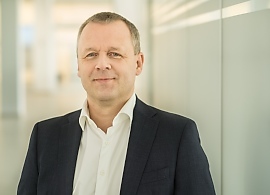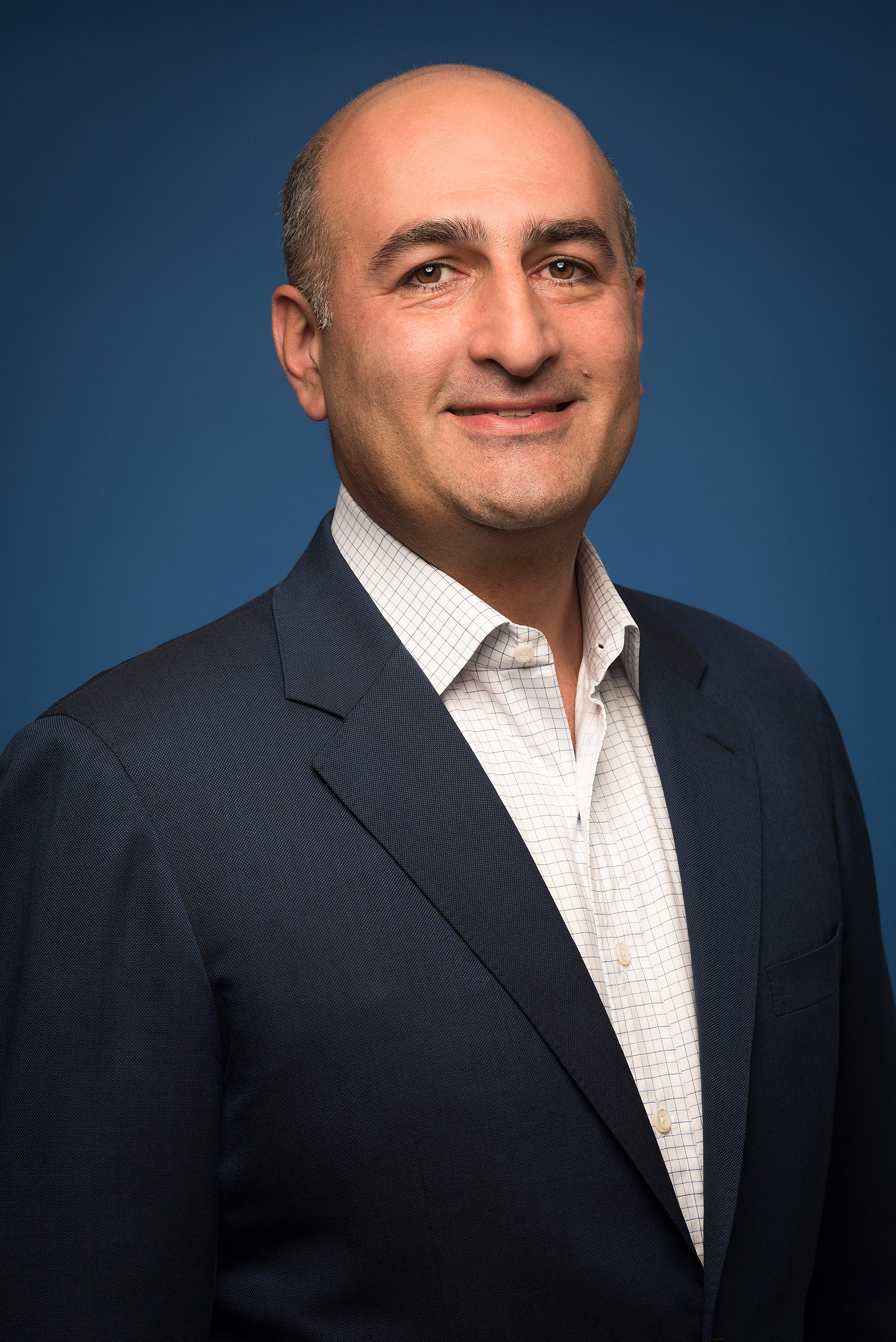Fresenius Kabi expands its portfolio of critical care medicines by launching Vasopressin Injection, USP, a generic equivalent to Vasostrict®* in the U.S.
Fresenius Kabi Vasopressin is indicated to increase blood pressure in adults with vasodilatory shock who remain hypotensive despite fluids and catecholamines.
* Vasostrict® is a registered trademark of Par Pharmaceutical.
Fresenius Kabi expands its portfolio of critical care medicines by launching Vasopressin Injection, USP, a generic equivalent to Vasostrict®* in the U.S.
Fresenius Kabi Vasopressin is indicated to increase blood pressure in adults with vasodilatory shock who remain hypotensive despite fluids and catecholamines.
* Vasostrict® is a registered trademark of Par Pharmaceutical.
Goldman Sachs – 44th Annual Global Healthcare Conference
June 13, 2023
Dana Point, USA
Goldman Sachs – 44th Annual Global Healthcare Conference
June 13 & 14, 2023
June 21, 2023
Frankfurt, Germany
Deutsche Bank - dbAccess German Swiss Austrian Conference
June 21, 2023
Under the U.S. Securities Act of 1933, as amended (the “Securities Act”), this press release may be deemed to be offering material of Fresenius Medical Care AG & Co. KGaA (“FME”). FME has filed a registration statement on Form F-4 under the Securities Act with the U.S. Securities and Exchange Commission (the “SEC”), including an information statement/prospectus constituting a part thereof. FME SHAREHOLDERS ARE URGED TO READ THE REGISTRATION STATEMENT AND ANY OTHER RELEVANT DOCUMENTS FILED OR THAT WILL BE FILED WITH THE SEC, INCLUDING THE INFORMATION STATEMENT/PROSPECTUS THAT IS PART OF THE REGISTRATION STATEMENT, AS THEY BECOME AVAILABLE, BECAUSE THEY CONTAIN OR WILL CONTAIN IMPORTANT INFORMATION ABOUT THE PROPOSED CONVERSION DESCRIBED THEREIN. The final information statement/prospectus will be distributed to FME shareholders. Shareholders may obtain a free copy of the disclosure documents (when they are available) and other documents filed by FME with the SEC at the SEC’s website at www.sec.gov or from Fresenius Medical Care AG & Co. KGaA, Attention: Investor Relations, Else-Kröner-Straße 1, 61352 Bad Homburg v.d.H., Germany.
Fresenius Medical Care, the world's leading provider of products and services for individuals with renal diseases, today announced the candidates who will be proposed for election to the Supervisory Board of the new Fresenius Medical Care AG in the Extraordinary General Meeting on July 14, 2023. As published in February 2023, the Extraordinary General Meeting will also decide on the Company's plans to change its legal form from the current KGaA (Kommanditgesellschaft auf Aktien) into a German stock corporation (Aktiengesellschaft) with a two-tier governance, including a Management Board and a co-determined Supervisory Board.
Fresenius Medical Care and its shareholders will benefit from the proposed new legal structure as it removes layers from the governance structure and allows for an even more focused, faster and agile decision making. The change of legal form will also free up executive and management capacity and avoid potential conflicts of interest. The new set-up will provide Fresenius Medical Care with unrestricted access to capital markets for financing purposes and will ensure independent decisions on financial and dividend policies. Furthermore, the proposed governance structure will particularly strengthen the rights of free float shareholders.
Proposed for election to the Supervisory Board are:
- Shervin J. Korangy, President & CEO at BVI Medical. He previously was a senior executive at Novartis Group, AG and a Managing Director at The Blackstone Group, Inc. Korangy holds U.S. citizenship.
- Dr. Marcus Kuhnert, CFO at Merck KGaA until the end of June 2023. Prior to that, he was CFO of the Laundry & Homecare division at Henkel. Kuhnert holds German and U.S. citizenship.
- Gregory Sorensen, M.D., CEO at DeepHealth, Chairman of the Board of Directors at IMRIS and a member of the Supervisory Boards of Fresenius Medical Care AG & Co. KGaA and of Fresenius Medical Care Management AG since 2021. From 2011 to 2015, he was CEO of Siemens Healthcare North America. Sorensen holds U.S. citizenship.
- Pascale Witz, President at PWH Advisors and a member of the Supervisory Boards of Fresenius Medical Care AG & Co. KGaA and of Fresenius Medical Care Management AG since 2016. The French citizen previously held the positions of Executive Vice President at Sanofi, and President & CEO of GE Healthcare Pharmaceutical Diagnostics.
“All four candidates are highly qualified and independent,” said outgoing Supervisory Board Chairman Dr. Dieter Schenk. “The mix of two current and two new Supervisory Board members also gives us a good balance between continuity and fresh views. Our goal is to have a best-in-class, diverse Supervisory Board with a broad range of skills and backgrounds.”
Michael Sen, Chairman of the Supervisory Board of Fresenius Medical Care Management AG and CEO of Fresenius, said: “The four candidates proposed for election have broad experience in different areas of the healthcare sector and in all major markets, including the U.S. Their expertise and international background will be a valuable support for us in the transformation of Fresenius Medical Care and the successful development of the Company.”
In total, the co-determined Supervisory Board of the future Fresenius Medical Care AG will consist of twelve members. In addition to the four members to be elected by the Extraordinary General Meeting, Fresenius, which holds 32.2 percent of the ordinary share capital, will have the right to appoint two members to the Supervisory Board. Fresenius will appoint its CEO Michael Sen and its CFO Sara Hennicken to the Supervisory Board of Fresenius Medical Care AG. The other six members of the Supervisory Board will be elected by the employees.
The Company proposes a four-year election period for the Supervisory Board of the future Fresenius Medical Care AG. The board will decide independently on its chairmanship. It is intended that Michael Sen will stand for election as Chairman of the Supervisory Board.
The full agenda for the Extraordinary General Meeting on July 14, 2023 was published today. It can be found on our website: https://www.freseniusmedicalcare.com/en/agm
This release contains forward-looking statements that are subject to various risks and uncertainties. Actual results could differ materially from those described in these forward-looking statements due to various factors, including, but not limited to, changes in business, economic and competitive conditions, legal changes, regulatory approvals, impacts related to COVID-19, results of clinical studies, foreign exchange rate fluctuations, uncertainties in litigation or investigative proceedings, and the availability of financing. These and other risks and uncertainties are detailed in Fresenius Medical Care AG & Co. KGaA's reports filed with the U.S. Securities and Exchange Commission. Fresenius Medical Care AG & Co. KGaA does not undertake any responsibility to update the forward-looking statements in this release.
Capital Markets Day 2023
- Advancing patient care – Providing world-class health care products and therapies for the benefit of patients around the world
- Serving highly attractive markets – Unique platform of four leading and complementary businesses in large, growing markets positions Fresenius Kabi well to benefit from paradigm shifts in health care
- Executing Vision 2026 – Fresenius Kabi’s framework essentially contributes to the Group’s #FutureFresenius strategy with focus on clear value drivers across four businesses
- Raising Kabi outlook for 2023 – Expecting mid-single-digit organic sales growth1 (previously: growth1 in low-to mid-single-digit percentage range) and EBIT margin2 of around 14% (previously: around 1%-point below structural margin2 band of 14 to 17%)
- Improving mid-term ambition level – Targeting upper end of structural EBIT margin band of 14 to 17% by 2026
1FY/22 base: €7,850 million
2FY/22 base: EBIT margin: 13.8%, before special items; FY/23 before special items
Today, Fresenius SE is hosting a Capital Markets Day in London focused on Fresenius Kabi, a global health care company that specializes in essential health care products for critically and chronically ill patients. The Capital Markets Day is featuring Fresenius CEO Michael Sen, Fresenius Kabi CEO Pierluigi Antonelli, and Members of the Fresenius Kabi Executive Leadership Team.
During the day, Fresenius Kabi will provide insights into the execution of its framework Vision 2026, the company’s growth and sustainable value creation pathway, and the outlook for its individual businesses.
Fresenius Kabi has implemented substantial changes to strengthen the position of its three growth vectors – Biopharma, MedTech, Nutrition, and to build resilience in its Pharma business. The company has leading positions in several highly attractive markets and is poised to benefit from major paradigm shifts in biology, technology, and data. Fresenius Kabi aims to leverage its market position to be an important player in meeting the consistently growing demand of high-quality, affordable treatments.
Fresenius CEO Michael Sen opened the meeting: “Fresenius is moving ahead in its efforts to simplify, sharpen its focus and accelerate performance, all pointed at Advancing Patient Care. Fresenius Kabi – now streamlined into Pharma, Biopharma, Nutrition and MedTech activities – is key to our mission, and key to improved financial performance.”
Sen continued: “Greater transparency will enhance understanding and appreciation of Kabi’s strengths and ambitions. That is the purpose of the day. Kabi advances patient care every day, improving the treatment for the benefit of patients worldwide. It has outstanding formulations and products, a global customer and manufacturing footprint, and an exciting pipeline of new innovations. The new management team has the energy and know-how to bring all these strengths forward, and to deliver on the financial metrics we’ve set out for the Group.”
At the Capital Markets Day, the company will provide clarity on the value drivers that underpin its decision to raise Fresenius Kabi’s 2023 sales and EBIT guidance and improve its 2026 EBIT margin ambition level. For 2023, the company now expects Fresenius Kabi to grow organic sales in the mid-single digits (previously: growth1 in low- to mid-single digits percentage range) and projects EBIT margin of around 14% (previously: 1%-point below the structural 14 to 17% margin2 band). Fresenius Group guidance is unchanged. For 2026, Kabi now targets EBIT margins at the upper end of its 14 to 17% structural margin band.
1FY/22 base: €7,850 million
2FY/22 base: EBIT margin: 13.8%, before special items; FY/23 before special items
Fresenius Kabi CEO Pierluigi Antonelli said: “Fresenius Kabi is committed to the delivery of relevant and advanced treatments across our four segments. Fresenius Kabi embarked on a value creation pathway, and we have already made significant progress along that journey. Our focus across all four business units is disciplined execution and we are implementing initiatives aimed at securing sustainable and profitable long-term growth – for the good of patients, customers, and shareholders. We’ve made significant progress along that journey.
We have a strong and experienced leadership team in place with a truly unique mix of competencies, clear accountability, and a performance-oriented focus.”
Highlights of the presentations
Kabi’s new leadership team will discuss some of the organizational and operational changes being implemented and provide greater transparency on the three growth vectors (i.e., BioPharma, Nutrition and MedTech) as well as the Pharma business where the company further builds up resilience.
Rollout Nutrition – Fresenius Kabi’s Nutrition business (2022 sales of €2.4bn) focuses on the fundamentally attractive market for Parenteral Nutrition (PN) and Enteral Nutrition (EN). Kabi’s Nutrition business holds leading positions in several key regions with a broad innovative portfolio of products including multi-chamber bags, lipids, amino acids, additives, sip and tube feeds, powders, and nutritional drugs. The portfolio offers robust potential from innovative products and an improved product and market mix. The company also sees significant geographic expansion opportunities, especially in China and the U.S. market.
Sales for Nutrition are expected to grow organically by 4 to 7% p.a. over the period 2022 to 2026. Fresenius Kabi targets stable EBIT margins at high level with upside potential.
Expand on MedTech – Expecting enhanced performance and value. Kabi’s MedTech business (2022 sales of €1.4bn) comprises an Infusion & Nutrition Systems (INS) unit and a Transfusion Medicine & Cell Therapies (TCT) unit. Through INS, the company provides a range of infusion pumps, IV access systems, nutritional systems and feeding tubes. Through TCT, Kabi offers a broad portfolio of products for blood collection, apheresis, plasma processing, autotransfusions and cell therapies. MedTech holds leading TCT positions with strong growth segments such as plasma and Cell & Gene Therapies. Kabi plans to expand its INS presence in the US with the help of Ivenix, a company acquired in 2022 and is also targeting growth in the software solution business.
Sales for MedTech are targeted to grow organically by 8 to 10% p.a. over the period 2022 to 2026. For EBIT margins a strong improvement is targeted.
Broaden Biopharma – BioPharma (2022 sales €0.2bn) comprises of a rapidly growing Biosimilars business and a nascent CDMO1 unit. After a period of heavy investments in building capacity and the pipeline, Biopharma is poised for rapid growth. The company has a track record of successful market entries in Europe and countries around the world. Based on its portfolio and pipeline in Autoimmune and Anti-inflammatory Disorders (AIID) and Oncology, Kabi’s ambition is to outgrow the market. Scaling and driving vertical integration with mAbxience also offers a synergistic setup for margin improvements.
1Contract Development and Manufacturing Organization
Sales for this business are projected to triple to quadruple over the period 2022 to 2026. Fresenius Kabi expects significantly improving EBIT margins and is committed to deliver EBITDA breakeven in 2024.
Build resilience in Pharma – Kabi’s Pharma unit (2022 sales of €3.8bn) is a supplier of system-critical generic IV Drugs and Fluids in a large global market growing in the low single digits. Kabi is a leading supplier of IV drugs in anesthetics & analgesics, anti-infectives, critical care and oncology, as well as IV Fluids such as crystalloids and colloids. Kabi’s Pharma business is built on a strong footprint in attractive markets with long-standing customers and contracting expertise. The broad launch pipeline with areas of product differentiation and new molecules, covers ~80% of relevant drugs losing exclusivity (LOE) in U.S.
Sales for this business are projected to grow organically by 2 to 4% p.a. over the period 2022 to 2026. The focus for Pharma is on stable margin performance and growing earnings.
Webcast of the event:
Fresenius Kabi Capital Markets Day will be available as a webcast on the Internet at: https://www.fresenius.com/capital-markets-day. After the event, a replay will be available on our website.
- Advancing patient care – Providing world-class health care products and therapies for the benefit of patients around the world
- Serving highly attractive markets – Unique platform of four leading and complementary businesses in large, growing markets positions Fresenius Kabi well to benefit from paradigm shifts in health care
- Executing Vision 2026 – Fresenius Kabi’s framework essentially contributes to the Group’s #FutureFresenius strategy with focus on clear value drivers across four businesses
- Raising Kabi outlook for 2023 – Expecting mid-single-digit organic sales growth1 (previously: growth1 in low-to mid-single-digit percentage range) and EBIT margin2 of around 14% (previously: around 1%-point below structural margin2 band of 14 to 17%)
- Improving mid-term ambition level – Targeting upper end of structural EBIT margin band of 14 to 17% by 2026
Today, Fresenius SE is hosting a Capital Markets Day in London focused on Fresenius Kabi, a global health care company that specializes in essential health care products for critically and chronically ill patients. The Capital Markets Day is featuring Fresenius CEO Michael Sen, Fresenius Kabi CEO Pierluigi Antonelli, and Members of the Fresenius Kabi Executive Leadership Team.
During the day, Fresenius Kabi will provide insights into the execution of its framework Vision 2026, the company’s growth and sustainable value creation pathway, and the outlook for its individual businesses.
Fresenius Kabi has implemented substantial changes to strengthen the position of its three growth vectors – Biopharma, MedTech, Nutrition, and to build resilience in its Pharma business. The company has leading positions in several highly attractive markets and is poised to benefit from major paradigm shifts in biology, technology, and data. Fresenius Kabi aims to leverage its market position to be an important player in meeting the consistently growing demand of high-quality, affordable treatments.
Fresenius CEO Michael Sen opened the meeting: “Fresenius is moving ahead in its efforts to simplify, sharpen its focus and accelerate performance, all pointed at Advancing Patient Care. Fresenius Kabi – now streamlined into Pharma, Biopharma, Nutrition and MedTech activities – is key to our mission, and key to improved financial performance.”
Sen continued: “Greater transparency will enhance understanding and appreciation of Kabi’s strengths and ambitions. That is the purpose of the day. Kabi advances patient care every day, improving the treatment for the benefit of patients worldwide. It has outstanding formulations and products, a global customer and manufacturing footprint, and an exciting pipeline of new innovations. The new management team has the energy and know-how to bring all these strengths forward, and to deliver on the financial metrics we’ve set out for the Group.”
At the Capital Markets Day, the company will provide clarity on the value drivers that underpin its decision to raise Fresenius Kabi’s 2023 sales and EBIT guidance and improve its 2026 EBIT margin ambition level. For 2023, the company now expects Fresenius Kabi to grow organic sales1 in the mid-single digits (previously: growth1 in low- to mid-single digits percentage range) and projects EBIT margin2 of around 14% (previously: 1%-point below the structural 14 to 17% margin2 band). Fresenius Group guidance is unchanged. For 2026, Kabi now targets EBIT margins at the upper end of its 14 to 17% structural margin band.
Fresenius Kabi CEO Pierluigi Antonelli said: “Fresenius Kabi is committed to the delivery of relevant and advanced treatments across our four segments. Fresenius Kabi embarked on a value creation pathway, and we have already made significant progress along that journey. Our focus across all four business units is disciplined execution and we are implementing initiatives aimed at securing sustainable and profitable long-term growth – for the good of patients, customers, and shareholders. We’ve made significant progress along that journey. We have a strong and experienced leadership team in place with a truly unique mix of competencies, clear accountability, and a performance-oriented focus.”
Highlights of the presentations
Kabi’s new leadership team will discuss some of the organizational and operational changes being implemented and provide greater transparency on the three growth vectors (i.e., BioPharma, Nutrition and MedTech) as well as the Pharma business where the company further builds up resilience.
Rollout Nutrition – Fresenius Kabi’s Nutrition business (2022 sales of €2.4bn) focuses on the fundamentally attractive market for Parenteral Nutrition (PN) and Enteral Nutrition (EN). Kabi’s Nutrition business holds leading positions in several key regions with a broad innovative portfolio of products including multi-chamber bags, lipids, amino acids, additives, sip and tube feeds, powders, and nutritional drugs. The portfolio offers robust potential from innovative products and an improved product and market mix. The company also sees significant geographic expansion opportunities, especially in China and the U.S. market.
Sales for Nutrition are expected to grow organically by 4 to 7% p.a. over the period 2022 to 2026. Fresenius Kabi targets stable EBIT margins at high level with upside potential.
Expand on MedTech – Expecting enhanced performance and value. Kabi’s MedTech business (2022 sales of €1.4bn) comprises an Infusion & Nutrition Systems (INS) unit and a Transfusion Medicine & Cell Therapies (TCT) unit. Through INS, the company provides a range of infusion pumps, IV access systems, nutritional systems and feeding tubes. Through TCT, Kabi offers a broad portfolio of products for blood collection, apheresis, plasma processing, autotransfusions and cell therapies. MedTech holds leading TCT positions with strong growth segments such as plasma and Cell & Gene Therapies. Kabi plans to expand its INS presence in the US with the help of Ivenix, a company acquired in 2022 and is also targeting growth in the software solution business.
Sales for MedTech are targeted to grow organically by 8 to 10% p.a. over the period 2022 to 2026. For EBIT margins a strong improvement is targeted.
Broaden Biopharma – BioPharma (2022 sales €0.2bn) comprises of a rapidly growing Biosimilars business and a nascent CDMO3 unit. After a period of heavy investments in building capacity and the pipeline, Biopharma is poised for rapid growth. The company has a track record of successful market entries in Europe and countries around the world. Based on its portfolio and pipeline in Autoimmune and Anti-inflammatory Disorders (AIID) and Oncology, Kabi’s ambition is to outgrow the market. Scaling and driving vertical integration with mAbxience also offers a synergistic setup for margin improvements.
Sales for this business are projected to triple to quadruple over the period 2022 to 2026. Fresenius Kabi expects significantly improving EBIT margins and is committed to deliver EBITDA breakeven in 2024.
Build resilience in Pharma – Kabi’s Pharma unit (2022 sales of €3.8bn) is a supplier of system-critical generic IV Drugs and Fluids in a large global market growing in the low single digits. Kabi is a leading supplier of IV drugs in anesthetics & analgesics, anti-infectives, critical care and oncology, as well as IV Fluids such as crystalloids and colloids. Kabi’s Pharma business is built on a strong footprint in attractive markets with long-standing customers and contracting expertise. The broad launch pipeline with areas of product differentiation and new molecules, covers ~80% of relevant drugs losing exclusivity (LOE) in U.S.
Sales for this business are projected to grow organically by 2 to 4% p.a. over the period 2022 to 2026. The focus for Pharma is on stable margin performance and growing earnings.
1FY/22 base: €7,850 million
2FY/22 base: EBIT margin: 13.8%, before special items; FY/23 before special items
3Contract Development and Manufacturing Organisation
Webcast
Presentations will be held on May 25, 2023, starting at 11:30 a.m. CEDT. You are cordially invited to follow the Capital Markets Day in a live webcast at https://www.fresenius.com/capital-markets-day. After the event, a replay will be available on our website.
This release contains forward-looking statements that are subject to various risks and uncertainties. Future results could differ materially from those described in these forward-looking statements due to certain factors, e.g. changes in business, economic and competitive conditions, regulatory reforms, results of clinical trials, foreign exchange rate fluctuations, uncertainties in litigation or investigative proceedings, the availability of financing and unforeseen impacts of international conflicts. Fresenius does not undertake any responsibility to update the forward-looking statements in this release.







